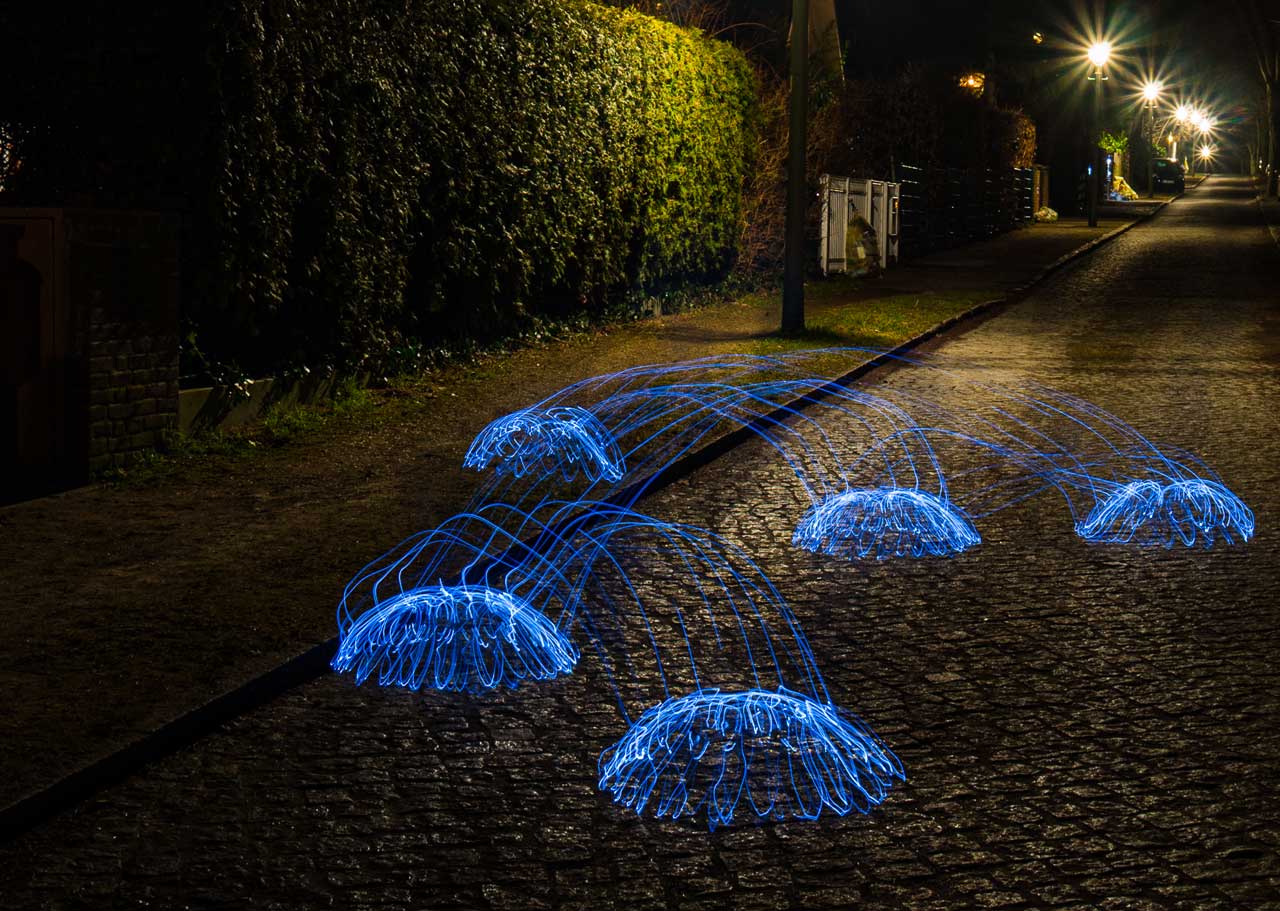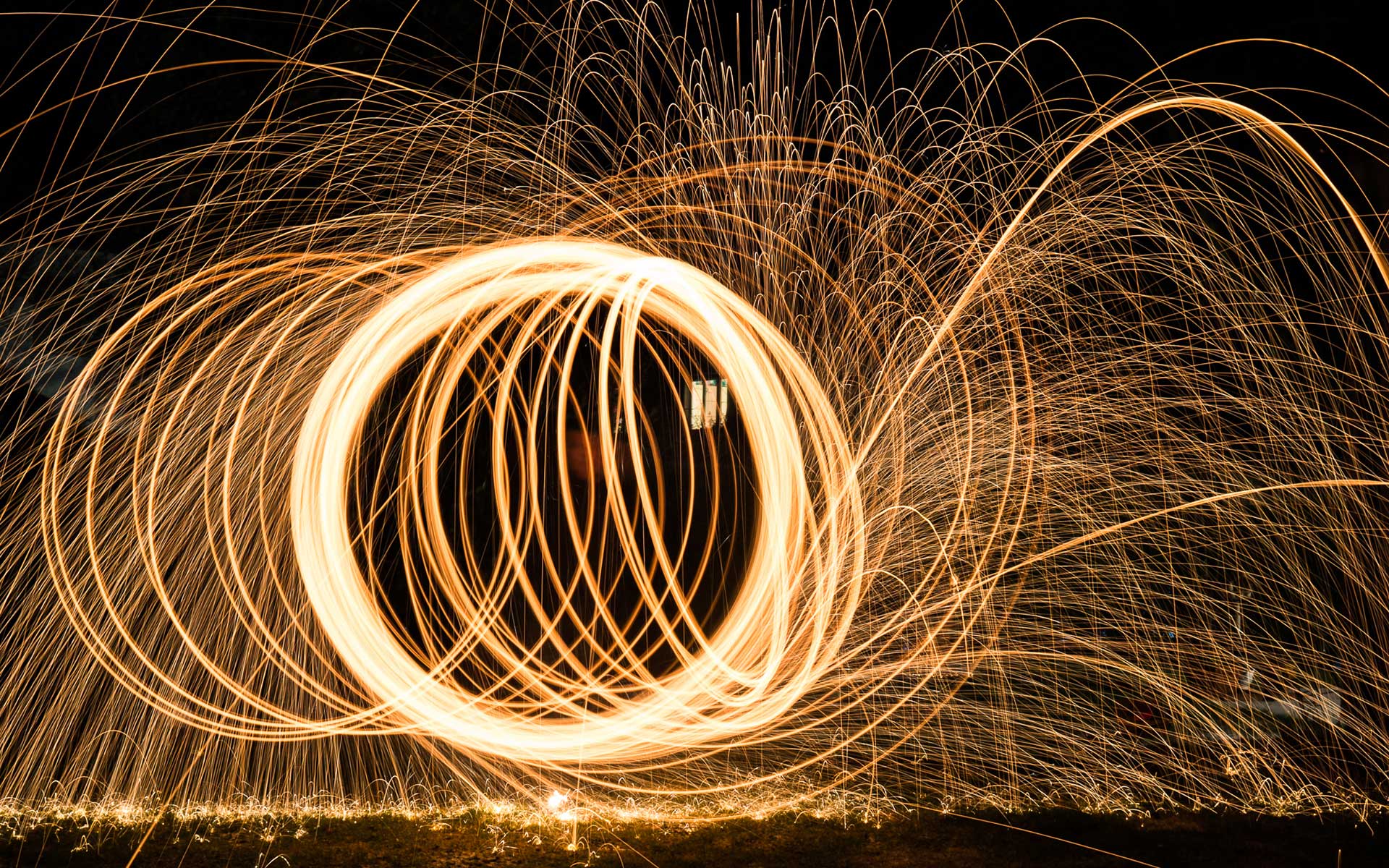Exciting traces of light
Reading time approx. 3 minutes
Helpful?
Exciting traces of light
Reading time approx. 3 minutes
Helpful?
It's always time to try something new - or to dig out some forgotten subject ideas. How about a personal message written with light, glowing greetings or an unusual painted declaration of love?
Painting or writing with light involves using a very long exposure time and moving, luminous objects to create light trails on a photo. With a little practice, you can conjure up short messages, objects or even mysteriously illuminated bodies. What do you need to take these photos?
The location
First, find a dark place, which could be your room or, depending on the light source, your garden or a park in the countryside.
Wear dark clothing if you don't want to be seen as a light painter in the picture. Light-coloured clothing is helpful if you want to appear in the photo yourself.
Camera equipment
The requirements for your camera are minimal: it should be able to take long exposures. Either by setting the exposure time (up to 30 seconds) or by using the Bulb mode, which allows you to leave the shutter open for as long as you like.
Handheld shots are not possible, of course, as our exposure times will be 15-30 seconds. You'll need to use a tripod or place your camera on a stable surface. The latter will severely limit your choice of frame, so we recommend using a tripod. A self-timer with adjustable delay or a remote shutter release will help you avoid camera shake when you press the shutter button.
Light sources
You will also need at least one portable light source. There are many types of light sources that will work. For example, you could use sparklers, Bengal logs, a torch or even a battery-powered LED light chain. The more different lights you have at your disposal, the more varied you can compose your photo. It's always worth experimenting with different light sources and combining them.
If you want to take the next step as an advanced light painter, you can also use burning steel wool as a light source. You can buy steel wool in any hardware store. A 3 or 4 gauge steel wool is best, and you will also need a whisk and some string. Attach the string to the whisk (so that you can spin it in a circle) and divide the steel wool into small portions, stuff them into the whisk and light them. Of course, your safety is also important in this type of photography. At the very least, you should wear goggles and perhaps have a bucket of water handy.
Preparation
If you are shooting alone, it is a good idea to memorise your shot with static objects or draw markings on the floor to help you decide where to place your light source. If you want to add text to the image, you have to write in reverse because you are writing on the back of the "paper". It is a good idea to practise this beforehand. This will also help with the placement of the text in the frame.
Shooting
The shooting settings: Manual setting with 20-30 seconds exposure time, aperture 5.6 to 8 and ISO 100 to 200. Choose the focal length depending on the shooting distance, 24-70mm is a good starting point. Focus should also be set manually. To do this, you define a line at a fixed distance on which you stand when you draw your subject. The relatively small aperture, and the resulting greater depth of field, allows slight deviations from this line to still produce a correctly focused image.
And although the new Canon lenses in particular recognise that they are mounted on a tripod, you should switch off the image stabiliser to avoid 'unnecessary' stabilisation attempts.
Professional tips
Have fun and good luck with your "light painting"!

